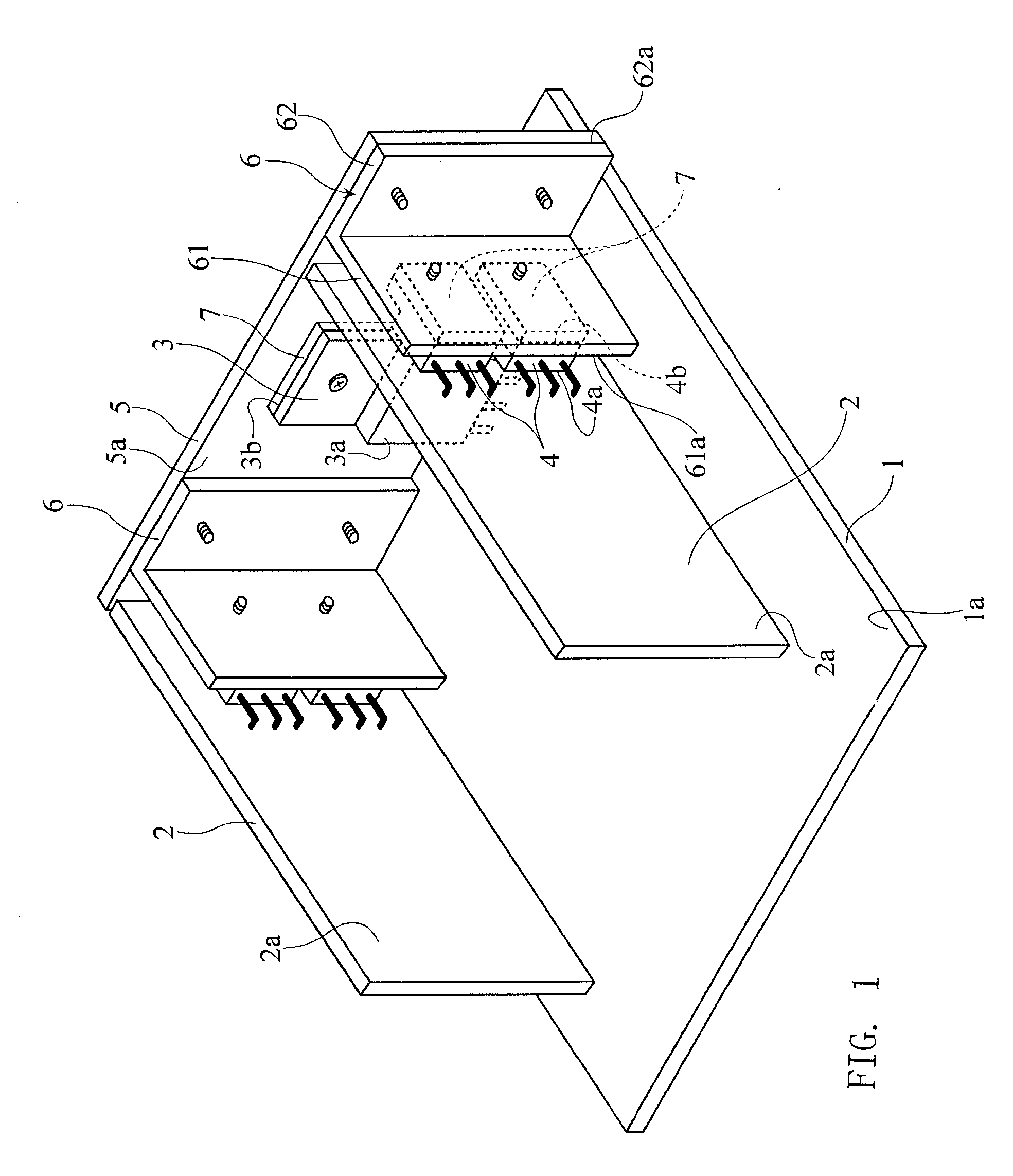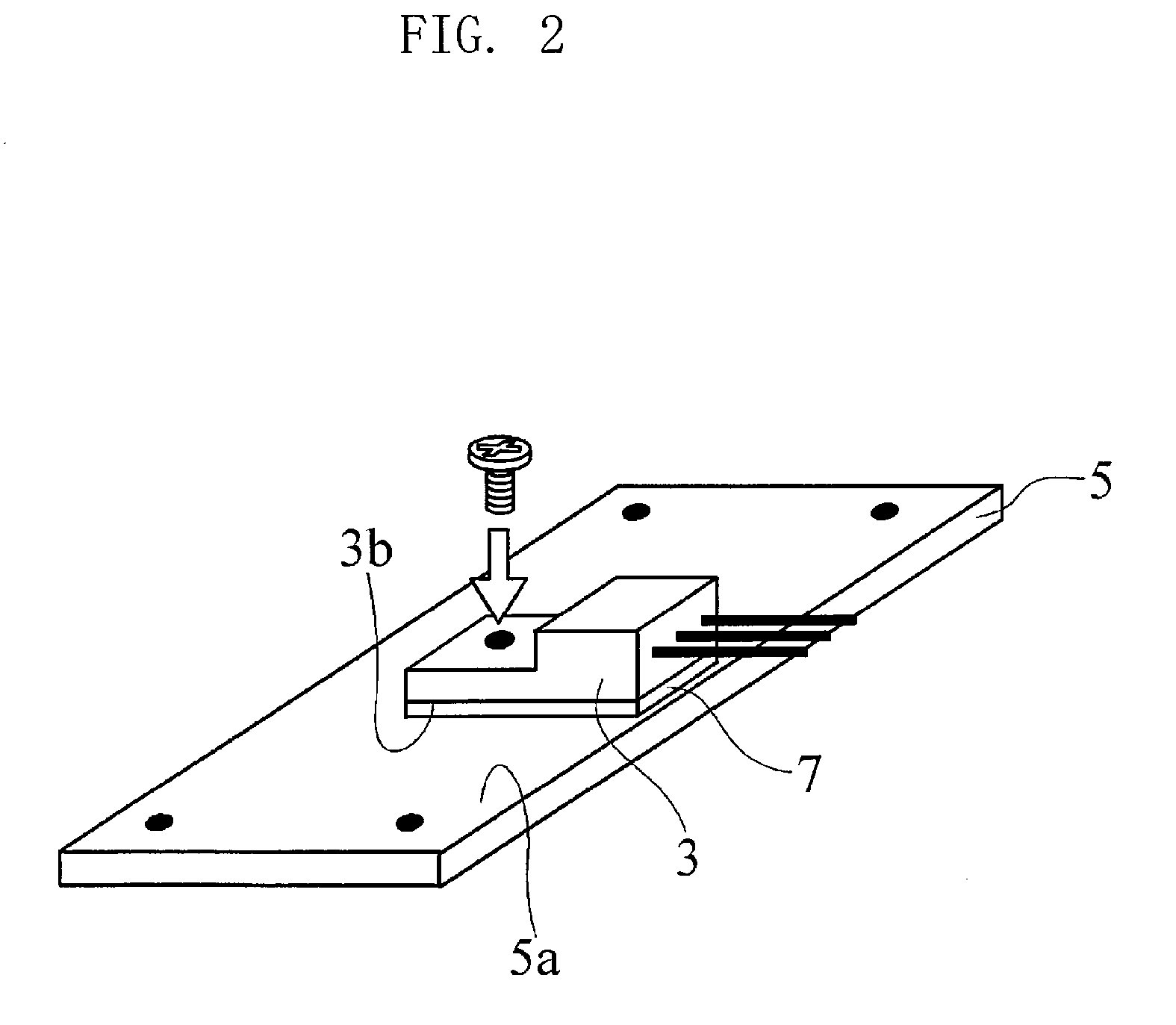Semiconductor device including main substrate and sub substrates and fabrication method of the same
- Summary
- Abstract
- Description
- Claims
- Application Information
AI Technical Summary
Benefits of technology
Problems solved by technology
Method used
Image
Examples
first embodiment
[0034]FIG. 1 is a view showing an internal structure of a semiconductor device according to the present invention. In FIG. 1, components which are not required to be described are not illustrated.
[0035]The semiconductor device includes a main substrate 1, sub substrates 2, a power-supply rectification diode 3, power transistors 4, a main-substrate heatsink 5, sub-substrate heatsinks 6, heat transfer sheets 7, and an outer case which is not illustrated.
[0036]The main substrate 1 is a power-supply substrate, and electronic components constituting a power supply device and electronic components for controlling are mounted on a mounting surface 1a thereof (the surface at the front side in FIG. 1). The respective electronic components are electrically interconnected, through wiring patterns provided on the mounting surface 1a and the back surface of the main substrate 1. In FIG. 1, the wiring patterns and the electronic components other than the power-supply rectification diode 3, which ...
second embodiment
[0061]In the second embodiment, similarly, there is no need for using dedicated jigs or dedicated securing members for securing the sub substrates 2 to the main substrate 1. Further, since the main-substrate heatsink 5′ is secured to the chassis 10 of the outer case, the chassis 10 of the outer case also functions as a heat releasing member. This can efficiently release heat generated from the heat generating devices, such as the power-supply rectification diode 3 and the power transistors 4.
[0062]Further, the method for securing the main-substrate heatsink 5′ to the chassis 10 of the outer case is not limited to the aforementioned method, and a heat transfer sheet 7 can be interposed therebetween or they can be secured to each other through other methods than securing with screws. For example, the main-substrate heatsink 5′ can be directly adhered to the chassis 10 with an adhesive agent with a lower thermal resistance or can be secured to the chassis 10 by soldering or welding. Fu...
third embodiment
[0066]While, in the third embodiment, the main-substrate heatsink 5 and the sub-substrate heatsinks 6′, which have been originally used for releasing heat, are used for securing the sub substrates 2 to the main substrate 1, which therefore eliminates the necessity of using dedicated jigs or dedicated securing members for securing the sub substrates 2 to the main substrate 1. Accordingly, this can reduce the number of assembling processes and also can reduce the material cost.
[0067]Further, in the third embodiment, the other surfaces 6′b of the sub-substrate heatsinks 6 are entirely contacted with the main-substrate heatsink 5, which can offer an advantage of making the efficient of the heat transfer from the sub-substrate heatsinks 6′ to the main-substrate heatsink 5 to be higher than those in the first and second embodiments.
[0068]Further, in the third embodiment, the sub-substrate heatsinks 6′ and the sub substrates 2 are secured to each other only with the respective terminals 4c...
PUM
 Login to View More
Login to View More Abstract
Description
Claims
Application Information
 Login to View More
Login to View More - R&D Engineer
- R&D Manager
- IP Professional
- Industry Leading Data Capabilities
- Powerful AI technology
- Patent DNA Extraction
Browse by: Latest US Patents, China's latest patents, Technical Efficacy Thesaurus, Application Domain, Technology Topic, Popular Technical Reports.
© 2024 PatSnap. All rights reserved.Legal|Privacy policy|Modern Slavery Act Transparency Statement|Sitemap|About US| Contact US: help@patsnap.com










